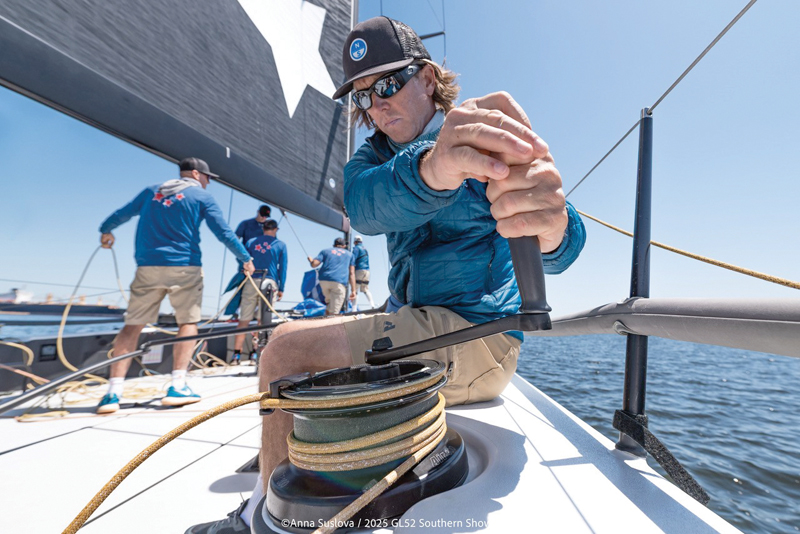How data informs communications and decision-making.
A recent episode of Sailfaster podcast featured top racer/coach Steve Hunt. Here is an extract from the podcast episode in which Steve talks about some of the differences between racing on a TP52 and smaller boats such as J/70s or Etchells.
Steve: It has definitely changed communications on other boats that I sail, like Etchells and J/70s. Because you fall in love with the TP52’s data, you want to replicate it elsewhere, such as having ‘burn time’ to the start that really frees you as a tactician to make decisions. If you have a minute to burn, you can do a circle, gybe, and head to the line. If you have five seconds to burn, you’re pretty much racing. If you have 30 seconds to burn, maybe you have time to do a double tack and go.
I’ve asked team members on other boats to pretend they have a box and call lengths to lay lines, burn time, or estimate time to the line. Having someone tell you lengths to the pin lay line as you’re coming into the starting box on port, means knowing when you can tack and lay the pin. Or if you’re heading towards the boat lay line, having someone say, “four lengths to boat lay line, three lengths to boat lay line,” knowing that you can now tack underneath it and you won’t be closed out by someone else. Whereas if you pass it and tack, maybe another boat hooks you and closes you out, so you can’t start. Having that data is great. That’s been a change which I think has helped us on other teams with smaller boats.
Does having all that data on a TP52 make your job easier or harder?
Sometimes harder! The instrumentation is great, but I still force myself to get my eyes out of the boat and use my own judgment. True wind direction can be screwed up after a tack. Also, it doesn’t work well in reaching in the pre-start—you trust the display, head up to win the pin, and then don’t lay! We now practice starts without instruments, and I drive by feel for time and distance. We add them back. That seems better than just fully trusting them, but I still use it with a grain of salt!
That’s really interesting as a way of thinking about doing that. My team will tell you that we’ve had our best results when our instruments have failed!
Totally. That’s how I learned! One day they all just crashed, and I had my best day and my lay lines were great. I thought, “What have I been doing listening to this box the whole time?!” It’s just a computer making guesses. It might tell you time to layline, but you’re three quarters of a mile away and you gybe on what it thinks is layline, and if there’s any shift, you’re not on it anymore.
Another difference between the small boats and big boats is that there’s ‘no man’s land’ in a TP-52 where you’re 25 seconds away from the leeward mark; that’s not enough time to gybe, get the jib up, and douse the kite; so you’re in this quandary of “what do we do?” Whereas in a J/70, you can just gybe, boom. Kite down. It’s easy; it doesn’t really matter. So, there are other constraints on a big boat, and yes, sometimes the instruments get you in trouble.
Hear the full eposide by listening to Sailfaster on Apple Podcasts, Spotify, or watch it on YouTube. To get more of Steve's advice and tips for racing sailors, go to stevehuntsailing.com.
Find more Sailfaster extracts at spinsheet.com; search 'Sailfaster Podcast.'




